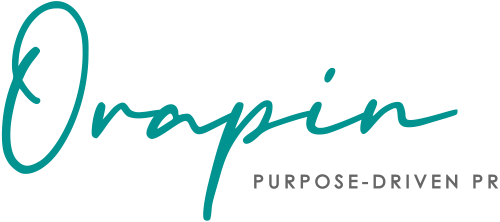
Generative AI can be a huge timesaver; however, it is no replacement for a human
If your job involves any sort of content creation, chances are good you’ve played around with generative AI, or at least read about how it might be used to optimize your workflow.
Generative artificial intelligence (AI) describes algorithms (such as ChatGPT) that can be used to create new content, including audio, code, images, text, simulations, and videos. Recent breakthroughs in the field have many industries aflutter. Will AI disrupt your approach to content creation?
In the PR world, we are seeing many examples of folks trying out AI to develop pitches and contributed content. On the flip side, some writers and editors have experimented with the platform as well. Though AI can support some of your work as it pertains to PR, it’s not time to let the computer handle the whole job just yet. Here are our observations and recommendations when it comes to using AI for PR.
ChatGPT is a useful tool, but should only be used as a starting point
There is no doubt about it, if you have a blank page in front of you and you’re experiencing writer’s block, ChatGPT can be quite useful as a starting point. If you need to draft a blog post or a media pitch, simply typing in your topic and seeing what the bot spits back out is a fun experiment. In our trials with it, we’ve found that the AI technology sorta got a good outline going. And sometimes a starting point is all you need.
If you’re looking for initial ideas to help create a lede or get some basic ideas started, ChatGPT is a great tool. If you need to write an in-depth case study on individuals suffering from substance misuse or draft a pitch highlighting your original research pertaining to education reform, ChatGPT should not be considered a replacement for your human brain or your Ph.D. Think of ChatGPT as a calculator. You can input some information, and the bot outputs a limited response based on your parameters. At its core, a bot doesn’t understand humanity, and as such, we should not expect it to replace our work as storytellers in PR.
Watch out for mistakes, falsehoods, and weirdness when using ChatGPT
If you decide to use ChatGPT to support your efforts in PR or communications, it is important to be aware of its shortcomings. Here is an actual email that a client received just this week:
Hello Management,
It’s a great to write you. My name is Allen Hoffman, am having my
birthday party on the 04/26/2023 and want it held at your venue. Also advice if you accept master, visa credit cards as manual payment.
I await your urgent response.
Thanks,
Allen Hoffman
Outdoor Marine Yacht Charter
Electrical Engineer
Now of course we can’t confirm that this email was written by a bot, but it sure has all the earmarks of “not-written-by-a-human.” The phrasing is close to being how a human speaks, but not quite. And the question about “credit cards as manual payment” is just plain weird, no one would ask that question when trying to reserve a venue. As a real human reading this email, you understand the question and the message, but you instantly know that this email did not come from a person. It just doesn’t capture our vernacular or common knowledge.
Here are a few things to be aware of when using ChatGPT:
- ChatGPT generates language based on an algorithm that guesses the next best word. Similar to autofill in your email or in a Word document, it won’t always get it right (see the above email as an example!)
- AI does not sort fact from fiction and can often include falsehoods and bias. When using AI to draft a blog post or content piece, be aware that the information generated by the bot may not be true or accurate. Always fact-check what the bot has provided.
- ChatGPT often lifts content from other sources (hence where the bias becomes involved). Be sure to verify that you aren’t unintentionally plagiarizing when using AI to draft byline articles and owned content.
Reporters will spot an AI-generated pitch
Just like we were instantly able to tell that the email about the venue rental was not human-generated, a reporter will easily know if you sent an unedited ChatGPT pitch. Or at least they’ll catch on at some point (check out this article from Insider on a bot posing as an expert source – yikes!). It is already hard enough to build trusting relationships with reporters, don’t give them another reason to block you.
If you plan to use AI to support your pitch writing, you can and should ONLY use it as a starting point or support tool. Here are a few rules of thumb to follow:
- Have ChatGPT write the initial pitch to a generic reporter, but plan to use this draft as a starting point and outline only. Check for accuracy, bias, and potential plagiarism.
- Use the bot to help customize your pitch for each reporter. Input “summarize stories about [reporter’s name] pertaining to [topic of your pitch]” and see what it spits out. If you know the reporter, you can verify that this information is accurate and save yourself a lot of time spent researching their relevant past articles.
- Keep in mind, the bot will not know what you know about this reporter – why do they cover the stories they cover, and what are their specific areas of expertise and interest? Make sure you edit the pitch to speak to the reporter’s beat and why the story would be of interest or a good follow-up piece. This connection part should be written by you; AI may guess, but it probably won’t be able to connect the dots the same way you can.
AI technology will continue to evolve, but for now, it can only be used as a support tool
Plugging your pitch or blog or byline topic into ChatGPT and having it create content is pretty cool. But a computer cannot replace a human brain. ChatGPT doesn’t have feelings, emotion, or the same creative storytelling abilities as us humans.
Especially for purpose-driven companies, storytelling is what pulls at heartstrings, rallies people behind your cause, and amplifies your message and good work. Taking out the human element is a disservice to the important work that you do. So while you may be pressed for time and ChatGPT feels like an “easy button,” remember, it cannot really replace you and your individual way of sharing your story.
At the end of the day, we all crave human connection. PR is, at its core, storytelling and sharing the human experience.

Diana Crawford is a seasoned public relations consultant with more than 15 years of agency, consulting, and in-house experience. She joined Orapin in 2013 and manages account services and client communications strategy development. She has worked across a variety of industries and has expertise with professional services, food/alcohol, health and wellness, lifestyle, sports, education, tech, and non-profit organizations.
